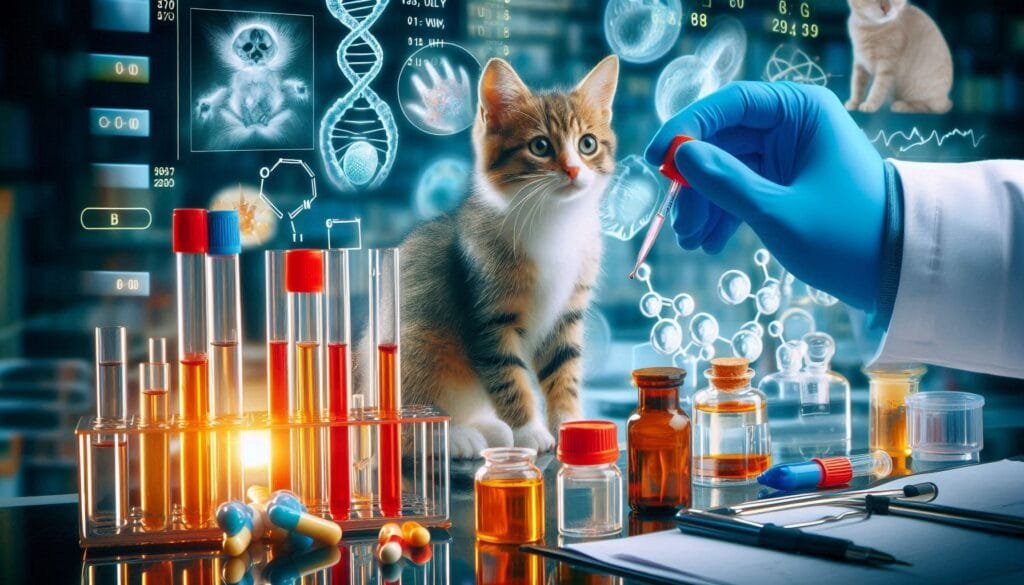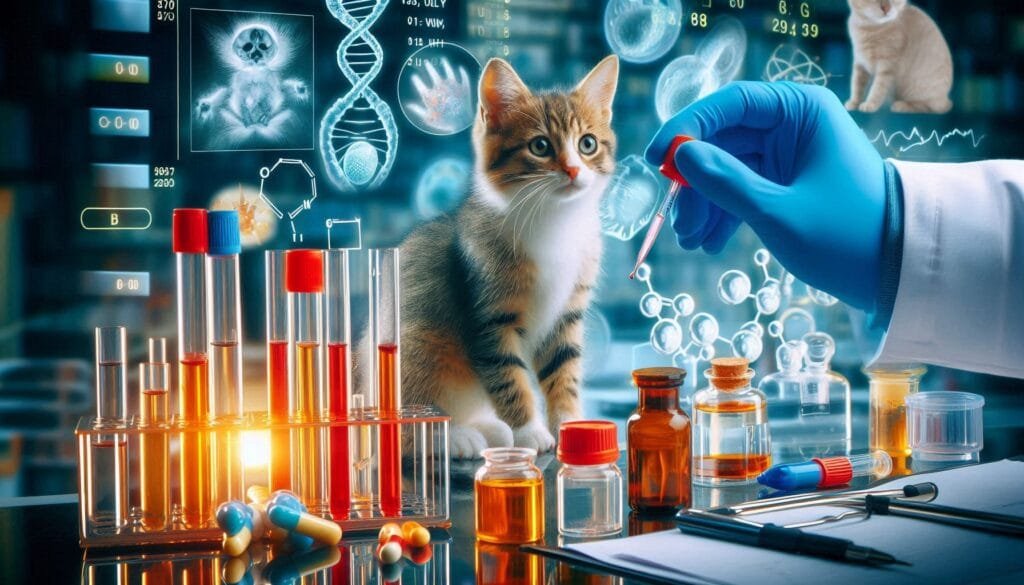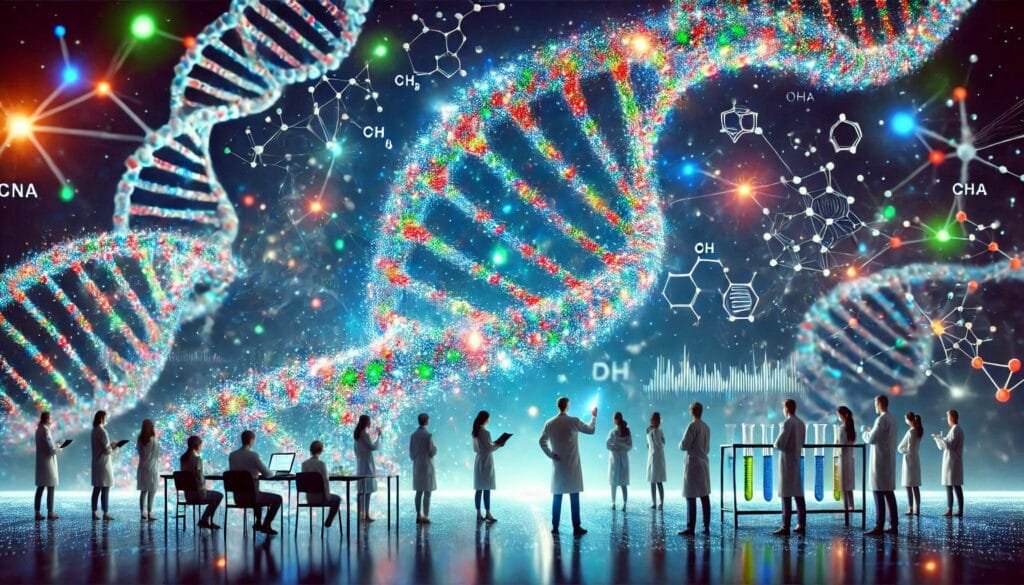RT-PCR in Veterinary Medicine

Introduction to RT-PCR in Veterinary Medicine
Reverse Transcription Polymerase Chain Reaction (RT-PCR) plays a vital role in veterinary diagnostics. This powerful technique allows veterinarians to detect and quantify RNA viruses quickly and accurately. With the rise of infectious diseases in animals, RT-PCR has become indispensable in managing animal health.
What is RT-PCR?
RT-PCR combines two processes: reverse transcription and polymerase chain reaction. First, it converts RNA into complementary DNA (cDNA). Then, it amplifies specific DNA sequences through PCR. This method enables the identification of viral pathogens that may be present in low quantities.
For a detailed overview of the basic principles of RT-PCR, you can refer to this article on RT-PCR.
Applications of RT-PCR in Veterinary Diagnostics
1. Viral Detection
One of the primary applications of RT-PCR is the detection of viral infections in animals. For instance, it is widely used to diagnose diseases caused by viruses like:
- Canine Parvovirus
- Feline Leukemia Virus
- Porcine Reproductive and Respiratory Syndrome Virus (PRRSV)
The ability to detect these viruses early can significantly improve treatment outcomes. A study published by the Journal of Veterinary Diagnostic Investigation highlights the effectiveness of RT-PCR for diagnosing canine parvovirus.
2. Surveillance and Epidemiology
RT-PCR also plays a crucial role in disease surveillance. It helps track outbreaks and monitor the spread of infections among animal populations. For example, during an outbreak of avian influenza, RT-PCR was essential for rapid diagnosis and containment measures.
Researchers often publish their findings on viral epidemiology in journals like Veterinary Microbiology. These studies provide insights into how viruses evolve and spread.
3. Characterization of Viral Strains
Characterizing viral strains is essential for developing vaccines and treatments. RT-PCR allows scientists to analyze genetic variations among different strains. This information aids in vaccine formulation and helps predict potential outbreaks.
For more information on viral strain characterization, visit the World Organisation for Animal Health (OIE) website.
Technical Aspects of RT-PCR
How Does RT-PCR Work?
RT-PCR consists of two main steps:
Reverse Transcription
In this step, RNA is converted into cDNA using the enzyme reverse transcriptase. This process is crucial because most pathogens have RNA genomes. The quality of RNA extraction significantly affects the results, so using high-quality reagents is essential.
Polymerase Chain Reaction
Once cDNA is synthesized, PCR amplification occurs. Specific primers target the cDNA sequence corresponding to the virus being studied. The PCR process involves repeated cycles of denaturation, annealing, and extension.
For a deeper understanding of PCR techniques, you can check out this PCR tutorial.
One-Step vs. Two-Step RT-PCR
RT-PCR can be performed using either a one-step or two-step approach:
One-Step RT-PCR
In one-step RT-PCR, both reverse transcription and amplification occur in a single reaction mix. This method reduces contamination risks but may limit sensitivity.
Two-Step RT-PCR
In two-step RT-PCR, reverse transcription occurs first, followed by PCR amplification in a separate reaction. This approach offers higher sensitivity but requires careful handling to avoid contamination.
Performance Metrics
Sensitivity and Specificity
The effectiveness of an RT-PCR assay depends on its sensitivity and specificity. Sensitivity refers to the test’s ability to correctly identify infected individuals, while specificity measures its ability to correctly identify non-infected individuals.
A study published by the Journal of Clinical Microbiology reported an RT-PCR assay with 94% sensitivity and 85% specificity compared to traditional virus isolation methods. Such metrics are vital for ensuring accurate disease diagnosis.
Quality Control Measures
To ensure reliable results, laboratories must implement strict quality control measures during RT-PCR testing. These include:
- Regular calibration of equipment
- Use of positive and negative controls
- Proper handling and storage of samples
Best practices for performance can be found in this set of guidelines from AAVLD.
Challenges and Limitations
Despite its advantages, RT-PCR has some challenges:
1. Contamination Risks
RT-PCR is highly sensitive; thus, contamination can lead to false positives. Laboratories must maintain strict protocols to minimize contamination risks.
2. RNA Degradation
RNA is prone to degradation during sample handling and extraction. Using high-quality reagents and following proper protocols can help preserve RNA integrity.
3. Cost Considerations
The cost of reagents and equipment for RT-PCR can be high compared to traditional diagnostic methods. However, the benefits often outweigh these costs due to faster results and higher accuracy.
Future Directions
As technology evolves, so does RT-PCR. Emerging techniques such as digital droplet PCR (ddPCR) offer even greater sensitivity and precision for detecting low-abundance targets.
Researchers are also exploring multiplexing capabilities that allow simultaneous detection of multiple pathogens in a single sample. This advancement could significantly enhance diagnostic efficiency in veterinary medicine.
For insights into future trends in molecular diagnostics, consider reading articles from Nature Reviews Microbiology.
Conclusion
RT-PCR has transformed veterinary diagnostics by enabling rapid detection and characterization of viral pathogens. Its applications range from diagnosing infections to monitoring outbreaks and developing vaccines.
As research continues to advance this technology, veterinarians will have even more powerful tools at their disposal for safeguarding animal health.
By understanding the principles and applications of RT-PCR, veterinary professionals can enhance their diagnostic capabilities significantly.
For more pearls of Vets Wisdom:
The Full-Sib Method in Livestock Breeding






Responses